Mountain biking has evolved over the years, with various advancements in technology leading to improved performance and enhanced riding experience. However, some riders still prefer the classic approach to mountain biking, which includes using rim brakes. In this article, we will discuss rim brake hubs, their role in mountain biking, and how they offer an efficient solution for your traditional bike setup.
What are Rim Brake Hubs?
Rim brake hubs are the central component of a wheel that connects the spokes to the axle and allows the wheel to spin freely while supporting the weight of the bike and rider. These hubs are specifically designed to work with rim brakes, which apply friction directly to the wheel's rim to slow down or stop the bike.
Advantages of Rim Brake Hubs
Lightweight: Rim brake hubs are generally lighter than disc brake hubs, as they don't require additional components like rotor mounts.
Simplicity: Rim brakes are easier to maintain and adjust compared to disc brakes, making them a popular choice for casual riders and those who prefer minimalist setups.
Cost-effective: Rim brake hubs and accompanying brake systems tend to be more affordable than their disc brake counterparts.
Disadvantages of Rim Brake Hubs
Less effective braking: Rim brakes may not provide the same level of stopping power and modulation as disc brakes, especially in wet or muddy conditions.
Rim wear: Prolonged use of rim brakes can lead to wear on the wheel's rim, potentially requiring more frequent rim replacements.
Choosing the Right Rim Brake Hub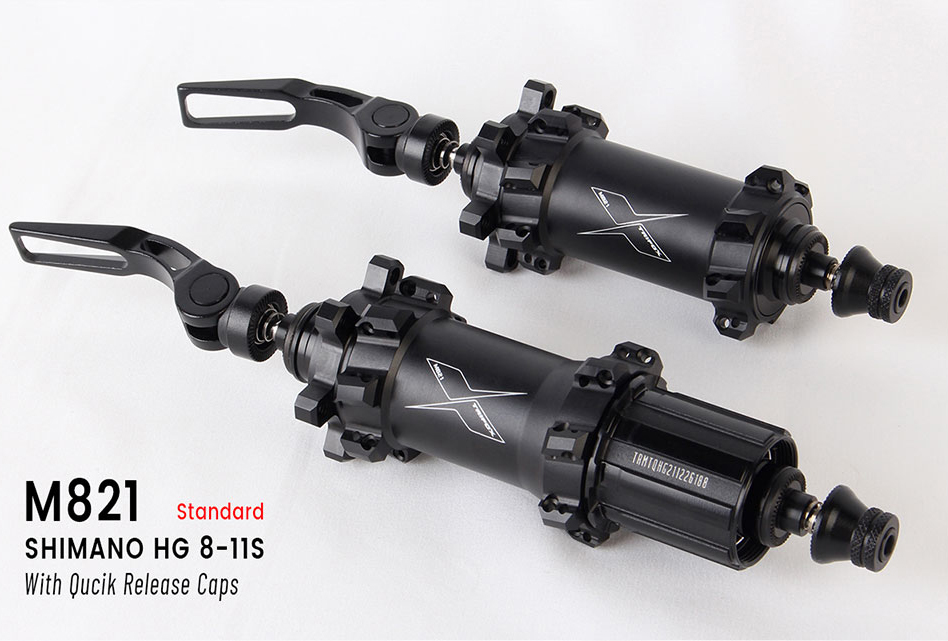
When selecting a rim brake hub for your mountain bike, consider factors such as material, bearing system, and compatibility with your bike's components. High-quality hubs, like the rim brake hub Trifox M821, are made from durable materials like aluminum alloy and feature a smooth-rolling bearing system to ensure reliable performance.
Additionally, make sure the hub is compatible with your bike's axle type and spoke count. A versatile hub that offers various options for axle types and accommodates different spoke counts can be an excellent choice for a custom mountain bike build.
In conclusion, rim brake hubs remain a popular choice for riders who appreciate the simplicity, lightweight design, and cost-effectiveness of traditional mountain biking setups. By understanding the advantages and disadvantages of rim brake hubs and considering factors like material, bearing system, and compatibility, you can choose the right hub to enhance your classic mountain biking experience.
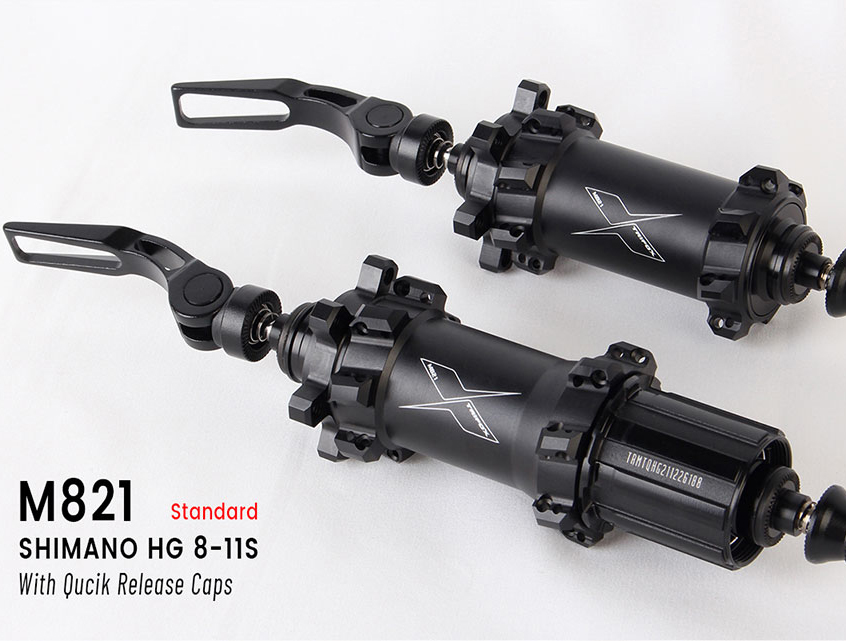
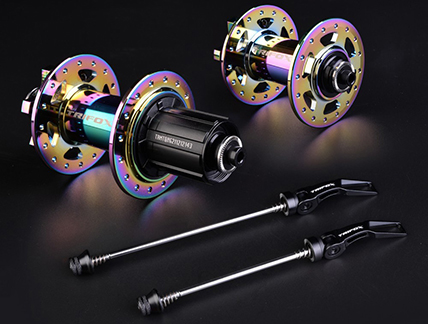
Mountain biking is an exhilarating sport that demands not only skill but also a reliable and high-performance bike. One crucial component of your mountain bike is the hub, which connects your wheels to the bike frame. In this article, we will discuss the differences between quick release (QR) and thru-axle (TA) mountain bike hubs, their advantages, and how the Trifox M827 hub offers the best of both worlds with its easy-to-maintain and versatile design.
Quick Release Hubs
Quick release hubs have been the standard choice for many years. They feature a hollow axle with a skewer running through it, secured by a lever on one end and a nut on the other.
Advantages of Quick Release Hubs:
Easy to install and remove the wheel without tools
Lightweight design
Generally more affordable
Disadvantages of Quick Release Hubs:
Less stiffness and stability compared to thru-axle hubs
Not as secure, potentially leading to the wheel coming loose during aggressive riding
Thru-Axle Hubs
Thru-axle hubs are becoming increasingly popular in modern mountain bikes. They consist of a solid axle that passes through the hub and directly screws into the bike frame, providing a sturdier connection.
Advantages of Thru-Axle Hubs:
Increased stiffness and stability, improving handling and performance
More secure, reducing the risk of the wheel coming loose
Better alignment for disc brakes, ensuring consistent braking performance
Disadvantages of Thru-Axle Hubs:
Heavier than quick release hubs
Wheel removal and installation can be slower and may require tools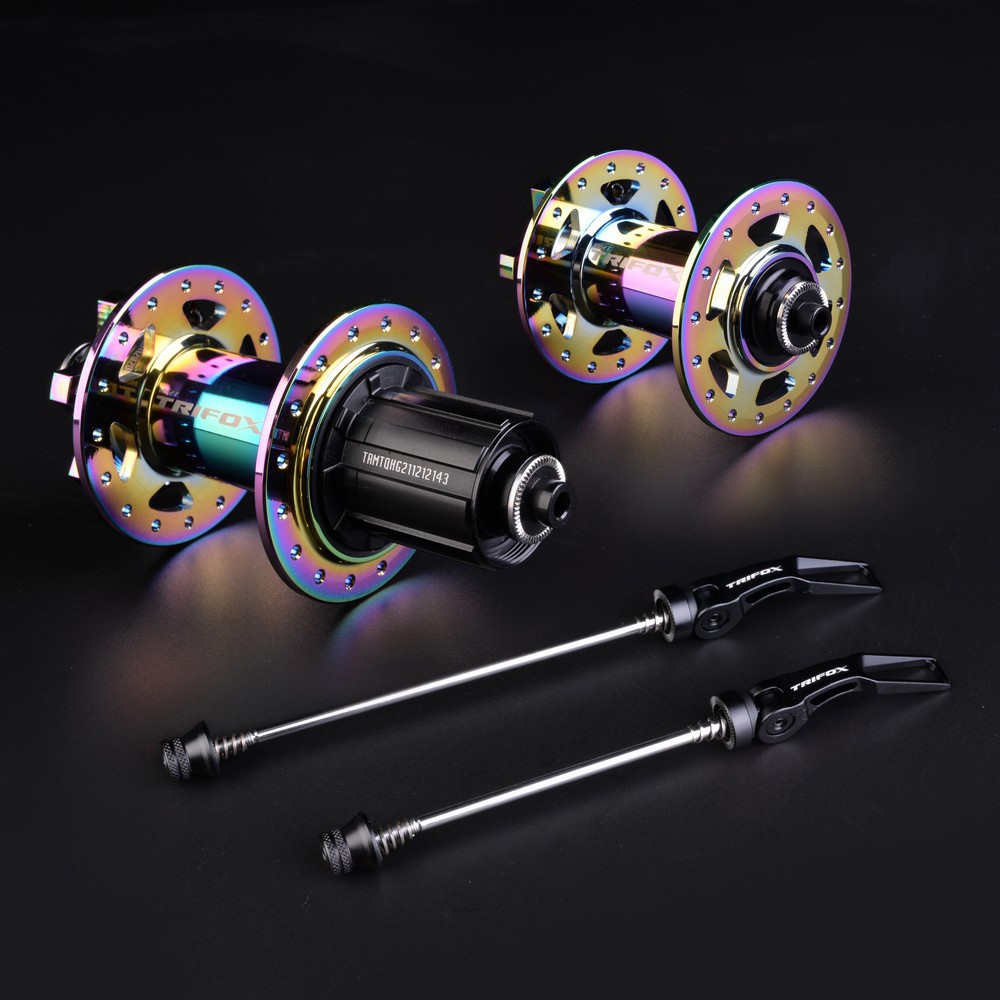
The Trifox M827 Bike Hub: A Versatile and Convenient Solution
The Trifox M827 mountain bike hub offers a unique solution that combines the advantages of both quick release and thru-axle systems. Its design allows for easy conversion between QR and TA by simply swapping the end caps, providing riders with the flexibility to choose the best setup for their riding style and bike compatibility.
Additionally, the M827 hub is made from durable materials like aluminum alloy 6061, 7075, and chromoly steel, ensuring longevity and reliable performance. The hub also features 2 bearings in the front and 4 bearings in the rear for smooth operation, and it's compatible with 14G 32-hole spokes and 6-bolt disc brakes.
In conclusion, the Trifox M827 mountain bicycle hub offers a versatile and convenient solution for riders looking to enjoy the benefits of both quick release and thru-axle systems. With its easy-to-maintain design and high-performance features, the M827 hub is an excellent choice for enhancing your mountain biking experience.
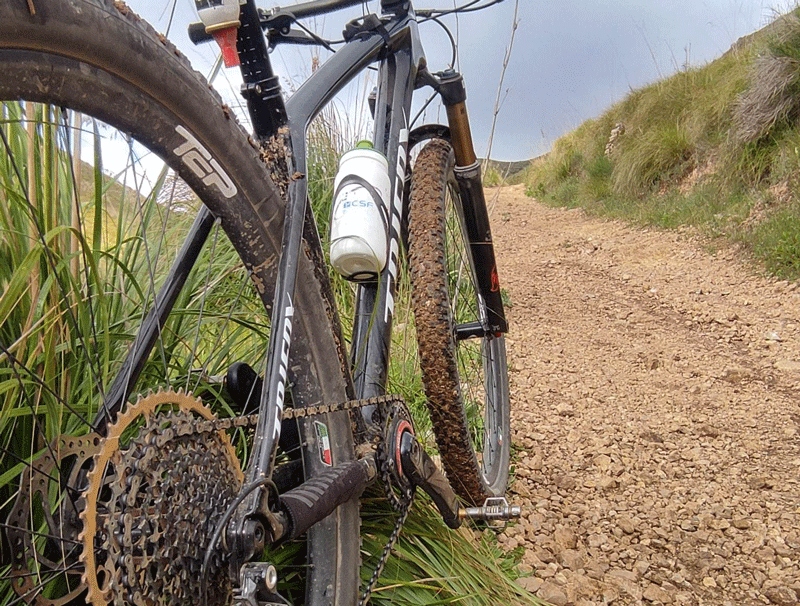
Hub spacing is one of the key factors to consider when selecting the right wheels for your bike. This critical measurement determines how the wheel fits into the frame. Bike hub standards can be confusing, and the wrong measurement can lead to incompatibility.
In this blog post, we aim to provide you with a clear understanding of hub spacing standards to help you make an informed decision when choosing your bike's wheels.
1. Quick Guide to Bike Hub Spacing Standards
There are four common bike hub spacing standards. They are:
- 100mm front quick-release spacing
- 135mm rear quick-release spacing
- 110mm front thru-axle spacing
- 142mm rear thru-axle spacing
Thru-axle refers to a type of axle that threads through the wheel hub and is secured on the other side, while quick-release refers to the skewer that tightens down on the axle to hold the wheel in place.
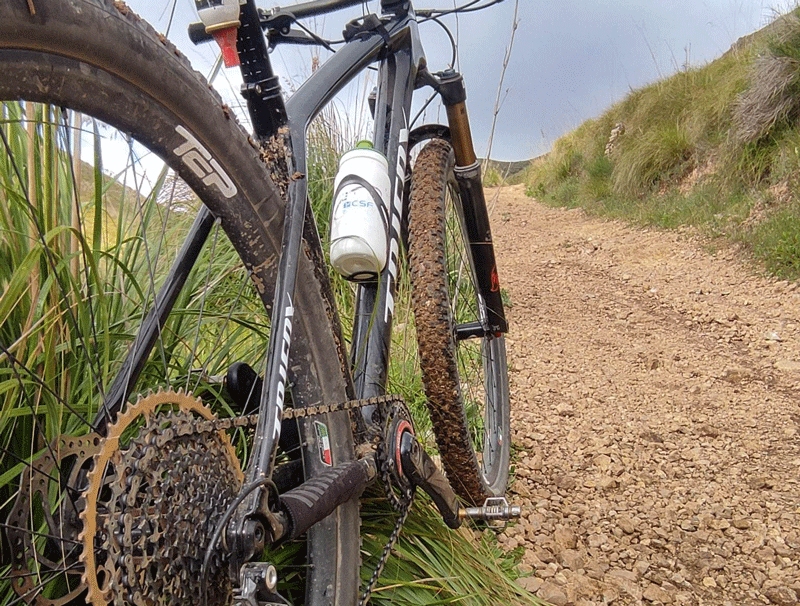
2. What’s the difference between quick-release and thru-axle?
Quick-release hubs are often used on rim brake bikes, while thru-axle hubs are used for disc brake bikes. Thru-axle hubs have a larger diameter than quick release, which means they provide more stiffness and stability. They also help to reduce rotor rub and wheel flex – two of the biggest issues that can lead to poor braking performance.
3. What hub spacing is most common?
The most common hub spacing standard for road bikes is 100/130mm for quick releases, while for mountain bikes is 110/142mm thru-axle. However, there are also other hub spacing standards, such as 12x142mm, 15x135mm, and 12x150mm. Before purchasing a new wheelset or bike frame, always check the hub spacing to ensure compatibility.
4. What hub spacing should I choose?
The perfect hub spacing you need should depend on the type of biking you intend to do. If you’re a roadie, you would most likely need a 100/130mm quick-release spacing. For mountain biking, you would most likely need a 110/142mm thru-axle. Remember, when choosing hub spacing, it’s always better to go with the standard size. This will make it easier to find replacement parts, such as wheels and cassettes.
5. How do I measure hub spacing?
If you want to know the hub spacing of your bike, you need to measure the space between the inside of the dropouts where the wheel fits in. For quick-release hubs, measure the distance between the two ends of the skewer. For thru-axle hubs, measure the internal width of the dropouts which will be the same as the distance between the two ends of the axle.
Conclusion:
Understanding hub spacing standards is essential when it comes to choosing the right wheels for your bike. Knowing the right hub spacing measurement ensures compatibility with your frame and helps to ensure that you can easily replace your wheels and other parts when it matters the most.
Remember, taking a little time to research and understand the hub spacing standards will save you time and money in the long run. So, take the time to check the measurements before making any purchase, and always ride safely with the perfect wheels for your bike.

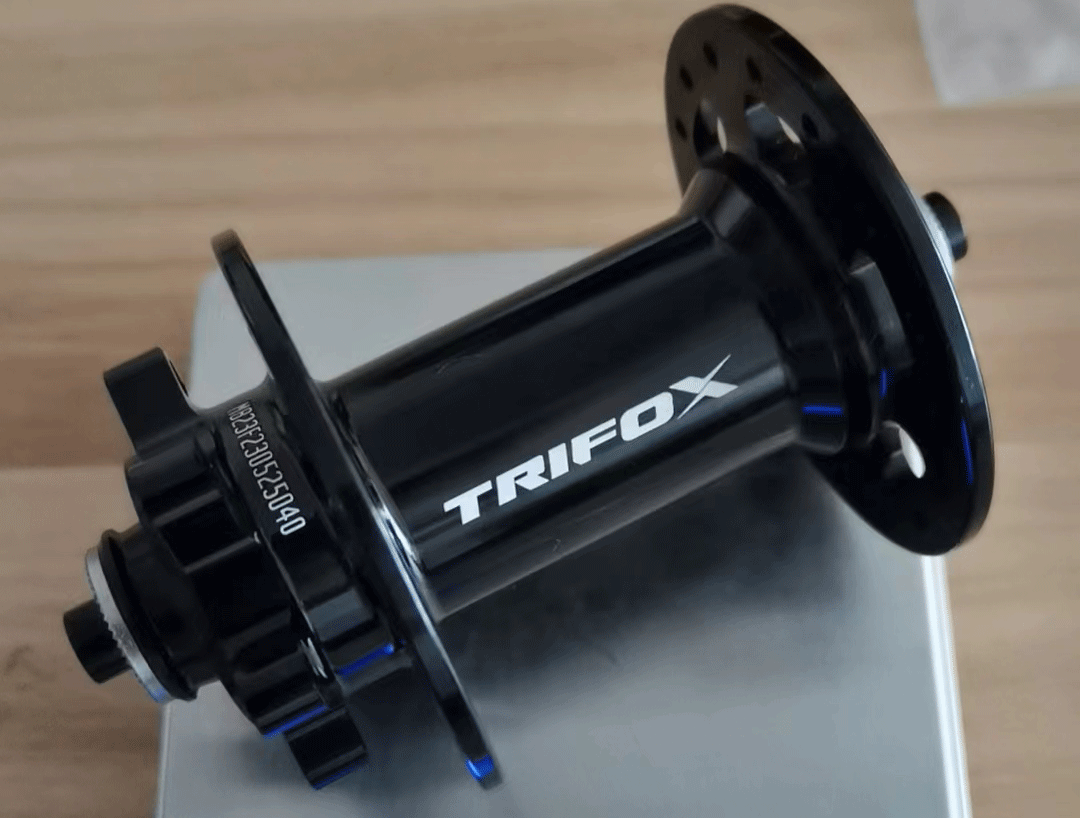
Cycling enthusiasts love to know how to take care of their bicycle’s components, not only because it is essential for smooth riding but also because knowledge is power. If you are one of those bike enthusiasts wondering how to measure the spoke hole diameter on a hub, which is one of the crucial components in a bike's wheel, you are in the right place.
In this blog post, we will discuss the steps to measure the spoke hole diameter on a hub.
Before we dive into the process of measuring the spoke hole diameter on a hub, let us first discuss what it is. The spoke hole diameter is the distance across the hole to the opposite side of the hub. The most common spoke hole diameters are 2.6mm and 2.9mm, with a few exceptions. For example, some lightweight components use smaller diameter spoke holes.
To measure the spoke hole diameter, you can use a vernier caliper or a ruler with millimeter markings. You need to measure the hub's hole from the inside of the spoke bed to the opposite side, across the center of the axle. Once you have found the center of the axle, you can measure the diameter of the spoke hole.
Another way to measure the spoke hole diameter on a hub is to use a drill bit and a caliper or ruler. First, find a drill bit that is larger than the spoke hole diameter and smaller than the hub's hole. Ensure the bit fits the hole snugly but can still turn freely. Once you have the appropriate drill bit, place it in the spoke hole and use your caliper or ruler to measure the drill bit's diameter. This measurement will be the diameter of the spoke hole.
If you have access to an electronic spoke tension meter, you can measure the spoke hole diameter by using it. Electronic spoke tension meters can measure the spoke tension and use it to calculate the spoke hole diameter. This method is easier, faster, and more precise than using a caliper or ruler.
You can also use the manufacturer’s specifications to identify the spoke hole diameter. Most manufacturers attach a tag on the hub, which lists every specification, including the spoke hole diameter. If you cannot find any tag or sticker on the hub, you can contact the manufacturer or look it up online.
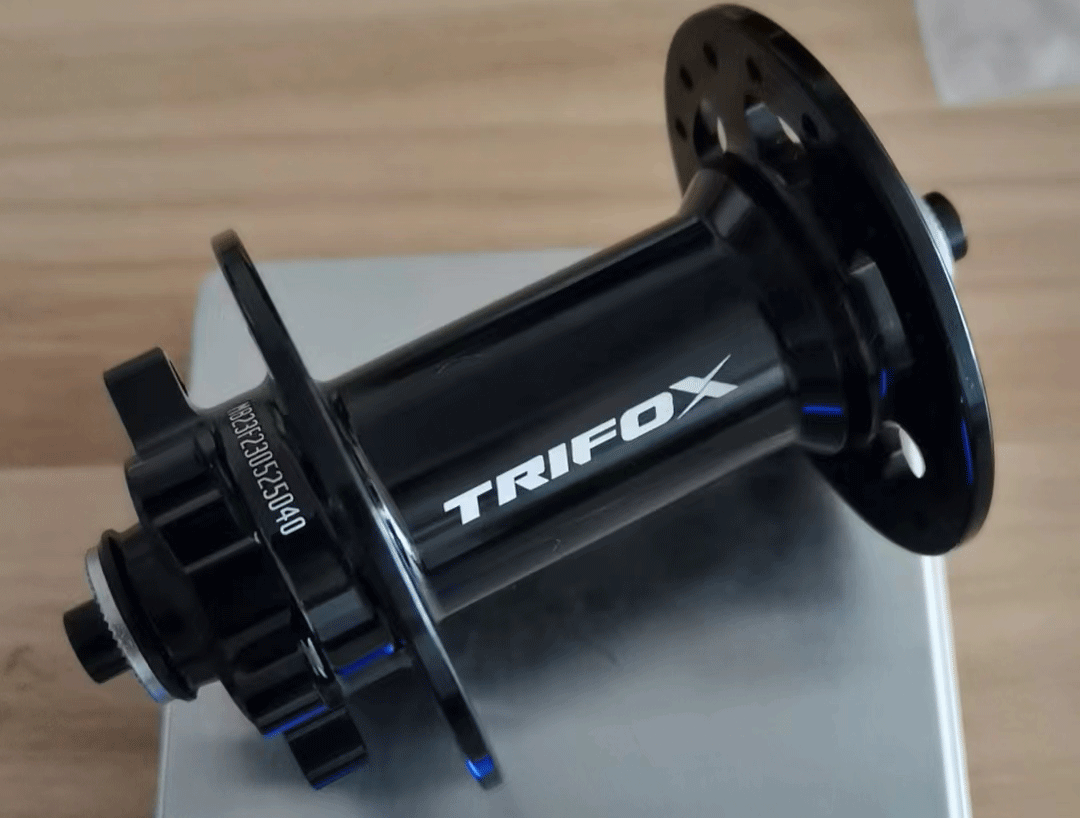
Conclusion:
Measuring the spoke hole diameter on a hub is essential to ensure a perfect fit and proper tension of your spokes, which is crucial for a smooth and safe ride. Whether you use a vernier caliper, ruler, drill bit, electronic spoke tension meter, or manufacturer's specification, the process for measuring the spoke hole diameter is relatively straightforward.
If you don't have any of the tools, you can always take your hub to a bike mechanic who can help measure it for you. Remember, knowledge is power, and taking care of your bike's components can make a significant difference in your cycling experience!

























































